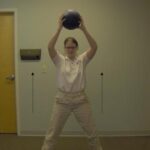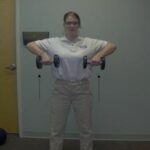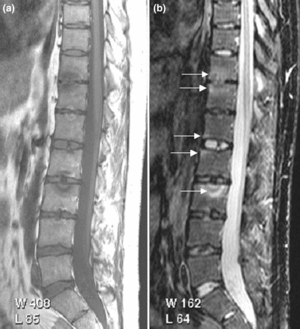Listed below are some common forms of arthritis and related conditions:
Osteoarthritis, sometimes called degenerative joint disease, resulting when the cushioning cartilage in the joints break down, causing pain and stiffness. It is the most common type of arthritis, usually affecting people after the age of forty-five.
Rheumatoid arthritis, is an autoimmune disease that inflames the lining of the joints. Rheumatoid arthritis is on of the most serious and disabling types of arthritis.
Fibromyalgia, is a chronic pain disorder that causes fatigue, sleep disturbances, and widespread pain in the muscles and tendons, particulary in the neck, spine, shoulders and hips. It affects mostly women.
Gout, is a painful condition that may attack both small and large joints, most often beginning in the beginning in the big toe. Gout affects mostly men and postmenopausal women.
Lupus, is a serious autoimmune disorder that can inflame and damage joints and other connective tissues throughout the body. It affects mostly women.
Juvenile arthritis refers to all types of arthritis that affect children. Rheumatoid arthritis is the most common type of juvenile arthritis along with other forms of lupus and ankylosing spondylitis, affecting children under the age of seventeen.
Other types of arthritis include infections of the joints(Infectious arthritis), fusing of the spine (ankylosing spondylitis) or a hardening of the skin and internal organs (scleroderma).
Researchers are unsure of what causes most kinds of arthritis. However, there are some known risk factors for some kinds of arthritis.
Some known risks for arthritis are: Being a women. Twice as many women as men get arthritis. Sometimes heredity. Some types of arthritis, including weakness in joints or bone, may be inherited. Repeated joint injuries or stresses. Sports or work activities can wear away cartilage in the joints.
Signs and symptoms are: Arthritis symptoms can vary from person to person. Swelling in one or more joints, especially with warmth and redness. Stiffness around the joints that lasts for at least one hour in the early morning. Constant or recurring pain or tenderness in a joint. Sudden difficulty using or moving a joint normally.
OSTEOARTHRITIS
This is a joint disease of most people over the age of sixty-five. Around the age of forty-five, many people begin to show signs of cartilage damage in their joints. Eventually most will have some type of steoarthritis. It is also called degenerative joint disease or degenerative arthritis.
Severity of this condition varies greatly. Sometimes it causes no more than mild aches and pains or it can be disabling. Those who have stressed their joints playing sports on the job may develop osteoarthritis earlier, or in a more severe form.
What happens in the joints? The ends of the bones in the joints are covered by a material called cartilage that acts as a cushion and provides a smooth gliding surface for joint motion. Synovial fluid, made up of a
substance called hyaluronic acid, lines the joints, acting as a shock absorber and lubricates the joints.
With age, cartilage begins to lose its flexibility and becomes more vulnerable to damage form overuse or injuries. How fast this can happen varies; families may pass along genes that cause cartilage to break down earlier. Injuries from playing sports or doing heavy labor, such as construction work, can also cause cartilage breakdown. Bones begin to thicken or change shape and joint space narrows, causing inflammation and pain. Sometimes bone comes in direct contact with other bone, causing pain and limited movement.
Some signs and symptoms are: Pain is the major symptom of osteoarthritis and cartilage loss. Some people also experience swelling and inflammation. Others may feel no pain. Osteoarthritis usually affects the joints of the knees, hips, hands, neck and lower back. Sometimes the big toe or bony spurs on the fingers are
included.
RHEUMATOID ARTHRITIS
Rheumatoid arthritis is a serious and chronic inflammation of the joints that can affect other organs as well. It usually begins in the young to middle adult years and strikes up to three times as many women as men. Typically affected are the joints of the hands and feet but can also involve the hips, knees, elbows and other joints. Severe cases may cause inflammation in other parts of the body, including the lungs, blood vessels and nerves.
No one knows what really causes rheumatoid arthritis, but experts suspect it has something to do with an autoimmune reaction. The immune system gets off balance and attacks the body’s own tissues. Hormones may also play a role, since more women than men get the disease.
What happens in the joints? The pattern and severity of the disease vary greatly from person to person. Rheumatoid arthritis attacks the lining of the joints. The joints become warm, swollen, tender and difficult to move. If the inflammation continues, it can destroy cartilage, bone, tendons and ligaments. The result is
permanent joint deformity and disability.
Signs and symptoms are: Pain, warmth, redness and soreness in the joints. Morning stiffness and lasting more than an hour. Swelling or pain in several joints, on both sides of the body. Fatigue, weakness and nonspecific aching. Low lever and enlarged lymph nodes. Loss of joint function. Inflammation of eyes, mouth, blood vessels, heart, lungs and nerves. Chest pain in the ribs, sternum and spine.
Some risk factors are: Being a women, heredity, smoking and infection. Some health care professionals believe that a buildup of toxins in the joints, such as heavy metals, undigested proteins form the gut may cause the immune system to attack both joints and organs.
FIBROMYALGIA
Fibromyalgia is a musculoskeletal pain and fatigue disorder for which the cause is unknown. Fibromyalgia means pain in the muscles, ligaments an tendons. Most patients with the disease say they ache all over. Sometimes the muscles twitch and at other times they burn. Some compare the disease to that of a bad flu, with every muscle screaming in pain. More women than men are afflicted with fibromyalgia.
GOUT
Gout is a painful arthritis caused by high blood levels of a chemical called uric acid. Uric acid is a substance that the body forms as a breakdown product of purines, which com form foods such as meats, some fish and alcohol.
What happens in your joints? Normally, uric acid circulated in the bloodstream and is eliminated through the kidneys in the urine. In people with gout, uric acid builds up in the blood and forms sharp crystals that collect in the joints and soft tissues, causing inflammation and pain.
Attacks come without warning, usually at night and usually starting in the coolest joint (big toe). Other targets include the ankles, heels, knees and wrists. Eventually, almost any joint can be affected if gone untreated. High levels of uric acid can also cause kidney stones.
Signs and symptoms are: Severe joint pain. Swelling, redness, warmth and extreme tenderness of the joint.
Fever, chills, fatigue and loss of appetite. Recurrent attacks, which last longer and become more frequent.
These are just some of the more common forms of arthritis and related conditions.






